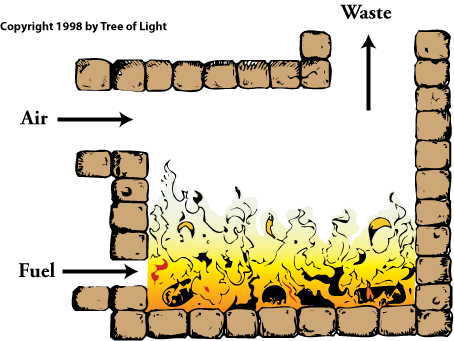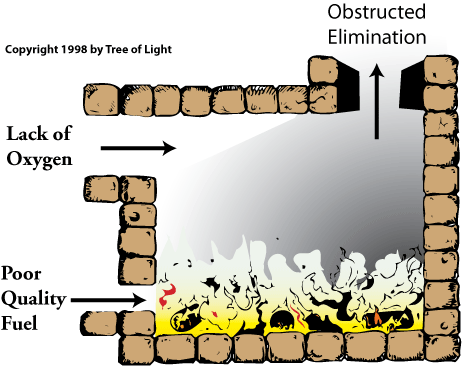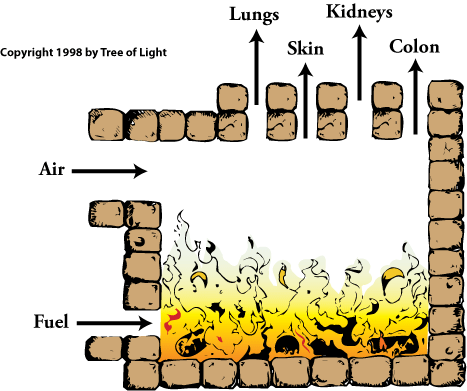Stay Informed
Popular Articles
- Hiatal Hernia: Hidden Cause of Chronic Illness
- Small Intestinal Bacterial Overgrowth (SIBO)
- Applied Lymphology: Unlocking the Secret to Pain Relief
- An Introduction to Constitutional Iridology
- The Low Down on Liver Detoxification
- An Energetic and Emotional Approach to Cancer
- Fat Facts
- Marrow in the Bones
- Blood Type and Nutrition
- Cardiac Herbs: Beyond Hawthorn
Quick Search
The School of Modern Herbal Medicine




The Cold is the Cure
- 2/26/2008
- Categorized in: Specific Health Problems
 For years medical researchers have struggled to find the answer to the common cold. Yet, in spite of the thousands of hours of research and the millions of dollars which have been put into this project, no one has yet discovered a cure for this common ailment. In this article, however, you will find the answer to the problem of the common cold. In fact, you will gain an important key to understanding the nature disease symptoms in general.
For years medical researchers have struggled to find the answer to the common cold. Yet, in spite of the thousands of hours of research and the millions of dollars which have been put into this project, no one has yet discovered a cure for this common ailment. In this article, however, you will find the answer to the problem of the common cold. In fact, you will gain an important key to understanding the nature disease symptoms in general.
This understanding of the common cold came from an analogy used in New Guide to Health by Samuel Thomson. Thomson compared the body to a furnace. A furnace takes in air and fuel and then burns the fuel to create heat or energy. It must also eliminate the smoke and ash that are created in this process.
A similar process takes place in our bodies. We eat food and breath in air and burn to food to create the energy our bodies need to function. We must also eliminate the waste from this process.
When thinking about the body as a furnace, if we use high-quality fuel such as high-grade coal or hardwoods to stoke the fire, then we will get a hot fire with very little smoke and ash. On the other hand, if we burn cheaper fuels such as softwoods, then the fire will not burn as hot or as clean. If we throw green wood or other poor quality fuel into the fire the flame will smolder and produce a great deal of smoke and ash.
This also is true of our bodies. The body is a high performance engine made to run on quality fuel. When quality fuel is used, the body furnace burns clean and hot, as is suggested by the following diagram.

In Thomson's words.
"Our life depends on heat; food is the fuel that kindles and continues that heat. The digestive powers being correct, causes the food to consume; this continues the warmth of the body, by continually supporting the fire. The stomach is the depository from which the whole body is supported. The heat is maintained in the stomach by consuming the food; and all the body and limbs receive their proportion of nourishment and heat from that source; as the whole room is warmed by the fuel which is consumed in the fire place. The greater the quantity of wood consumed in the fireplace, the greater the heat in the room. So in the body; the more food, well digested, the more heat and support through the whole man."
Toxic Overload
However, when poor quality fuel (i.e., 'junk" food) is used, the internal fire may begin to smolder and smoke. It no longer produces the heat or energy we need and we begin to feel tired and worn out. As smoke and ash begin to build up in the fireplace, the chimney may become clogged and the fire begin to smother. I call this condition "toxic overload." This next figure illustrates this situation.

Thomson described this condition in the following words.
"By constantly receiving food into the stomach, [food] which is...not suitable for the best nourishment, the stomach becomes foul, so that the food is not well digested. This causes the body to lose its heat; then the appetite fails; the bones ache, and the man is sick in every part of the whole frame."
If you've had any experience in making campfires, you probably realize that if the fire is hot enough, you can throw in a green branch or two and they will burn. However, if you continue to feed the fire with green wood, eventually in will smolder and die. Hence, we could get away with consuming this poor quality fuel if we only did it occasionally, but when we use inferior fuel constantly, our internal fire is going to diminish and our body will begin to accumulate an excess of smoke and ash (toxic waste). We will feel this first as a loss of energy.
According to Thomson's theories, disease occurs when the body energy or fire is diminished and the perspiration or elimination is obstructed. He felt that fever was not a disease, but rather an attempt on the part of the body to burn up the excess toxic material in the system.
"Is fever or heat a disease? Hippocrates, the acknowledged father of physicians, maintained that nature is heat; and he is correct. Is nature a disease? Surely it is not. What is commonly called fever, is the effect and not the cause of disease. It is the struggle of nature to throw off the disease. The cold causes an obstruction, and fever arises in consequence of that obstruction to throw it off. This is universally the case. Remove the cause and the effect will cease."
The Body's Chimney's
As I thought about what Thomson had to say of fevers, I began to wonder if this was not true of symptoms in general. I began to understand that unlike a furnace, the body has intelligence. Hence, if one or more of the body's chimneys becomes partially blocked, the body will seek to remove the excess waste through one of the other channels of elimination. The body, you see, does not have one chimney, it has four (five in women). These chimneys are the bowel, the kidneys, the skin, the mucus membranes (lungs & sinuses) and, in women, the female reproductive system.
When one channel cannot handle all the waste in the body, then another, stronger, channel of elimination will take up the slack. I call this process emergency evacuation. It has also been called vicarious elimination. This process is illustrated by the following.
This emergency evacuation of toxins produces most of the symptoms of acute ailments. When this elimination of excess waste occurs through the bowel we call it diarrhea. When it occurs through the kidneys it may produce frequent or burning urination or other signs of kidney or bladder distress. When it occurs through the skin we have body odor, pimples, acne, rashes, hives and pox. When it occurs through the sinuses and lungs we have bad breath, sinus drainage, runny noses, coughs and other forms of respiratory congestion.
Continued on page 2...
